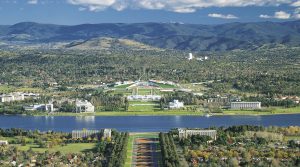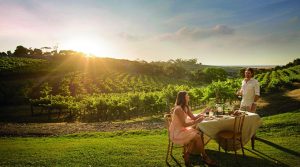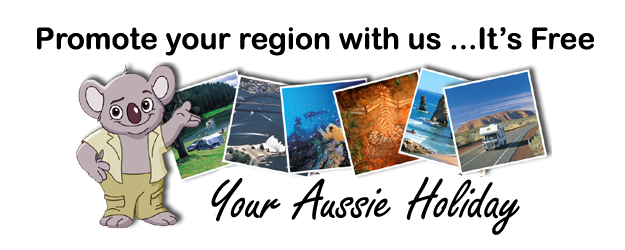Visit Australia By State (Click images below)







THERE’S NOTHING LIKE AUSTRALIA.
Australia .. The Ancient Land.
 Australia, One of the oldest continents on the earth. Australia began separation from Antarctica about 80 million years ago. While it is the smallest continent on the planet it is the largest island, surrounded by the Pacific, Indian and Great Southern Oceans.
Australia, One of the oldest continents on the earth. Australia began separation from Antarctica about 80 million years ago. While it is the smallest continent on the planet it is the largest island, surrounded by the Pacific, Indian and Great Southern Oceans.
The story about Australia and it’s earliest inhabitants dates back around 60 thousand years, when diverse races from what are now India, Asia and countries on the Pacific Rim, crossed onto Australia by land bridge during the last Ice Age. That migration lasted for tens of thousands of years with different races melding into what we now know as the Australian Aboriginal people. This migration continued with European discovery of the Great Southern Land commencing some 350 years ago, and the journey of discovery and settlement continues to this day, with Australia’s population growing from around 350,000 at the time of European settlement in 1788 to some 23,000,000 people in 2013.
Please browse these pages and peruse the wonderful diversity of our Cities, Beaches, Mountains and Outback Regions. The information contained within these pages will help you decide in which direction your Australian adventure will take you.
Australia is divided into six States and two Territories.
The Australian Capital Territory (ACT):
 As the name would suggest, the ACT contains Australia’s National Capital, Canberra. It is the centre of Government and is located approximately 290 kilometres south of Sydney. The city lies on the ancient lands of the Ngunnawal people, and owes it’s name to the ancient word “Kamberra” meaning “meeting place”. Canberra is home to National Instutions such as The Australian Parliament, the High Court of Australia, The National War Museum and the National Art Gallery. [Read More..]
As the name would suggest, the ACT contains Australia’s National Capital, Canberra. It is the centre of Government and is located approximately 290 kilometres south of Sydney. The city lies on the ancient lands of the Ngunnawal people, and owes it’s name to the ancient word “Kamberra” meaning “meeting place”. Canberra is home to National Instutions such as The Australian Parliament, the High Court of Australia, The National War Museum and the National Art Gallery. [Read More..]
New South Wales:
 Situated on Australia’s east coast, NSW is the country’s most populated state and is the oldest. It encompasses the site of the first British settlement in 1788. The region was originally settled as a penal colony at Port Jackson, on the Tasman Sea where it’s cosmopolitan capital city of Sydney now stands. More than a third of all Australians live in New South Wales, and Sydney is the nation’s largest city and home to such Australian icons as the Sydney Opera House and Harbour Bridge. The New South Wales coast is strewn with beautiful surf beaches and coastal villages and cities, while it’s mountains are home to some of the finest snow skiing slopes in the world. Then there are it’s rich rural areas and spectacular tableland regions offering a multitude of historical sites, Vineyards and agricultural beauty, giving way to the outback with cultural sites and gem field areas. New South Wales offers a rich tapestry of destinations and adventure for the seeker who wants to be amazed. [Read More..]
Situated on Australia’s east coast, NSW is the country’s most populated state and is the oldest. It encompasses the site of the first British settlement in 1788. The region was originally settled as a penal colony at Port Jackson, on the Tasman Sea where it’s cosmopolitan capital city of Sydney now stands. More than a third of all Australians live in New South Wales, and Sydney is the nation’s largest city and home to such Australian icons as the Sydney Opera House and Harbour Bridge. The New South Wales coast is strewn with beautiful surf beaches and coastal villages and cities, while it’s mountains are home to some of the finest snow skiing slopes in the world. Then there are it’s rich rural areas and spectacular tableland regions offering a multitude of historical sites, Vineyards and agricultural beauty, giving way to the outback with cultural sites and gem field areas. New South Wales offers a rich tapestry of destinations and adventure for the seeker who wants to be amazed. [Read More..]
Victoria:
 The smallest of the mainland states in size but the second most populated Victoria offers it’s own special charm. It is uniquely Australian, yet with a touch of Europe. Melbourne is the capital and is Australia’s second most populated city. During the gold rush of the 1850s, it became one of the world’s largest and wealthiest cities. Melbourne is sometimes referred to as the “cultural capital of Australia” and is the birthplace of Australian film, television, art, dance and music. Victorians’ enthusiasm for sport is also legendary and this is where Australian Rules football began. It is the home of the Australian Grand Prix and of course this is where “the race that stops a nation” is held each November, The Melbourne Cup. [Read More..]
The smallest of the mainland states in size but the second most populated Victoria offers it’s own special charm. It is uniquely Australian, yet with a touch of Europe. Melbourne is the capital and is Australia’s second most populated city. During the gold rush of the 1850s, it became one of the world’s largest and wealthiest cities. Melbourne is sometimes referred to as the “cultural capital of Australia” and is the birthplace of Australian film, television, art, dance and music. Victorians’ enthusiasm for sport is also legendary and this is where Australian Rules football began. It is the home of the Australian Grand Prix and of course this is where “the race that stops a nation” is held each November, The Melbourne Cup. [Read More..]
Queensland:
 Australia’s second largest state in size. The state capital is Brisbane, the third most populated city in Australia. Queenslanders enjoy more winter sunshine and warmth than most other Australian states and it’s perfect for all types of outdoor activities and water sports. Queensland is also home to the world famous Great Barrier Reef as well as five World Heritage listed areas. In North Queensland, major tourist attractions collide and overlap, The Great barrier Reef, The Whitsundays, the Wilderness Rainforest areas and the Great Out Back are all contained within the North Queensland region. Then in the south of course is the Gold, Sunshine and Fraser Coasts. It is easy to see why Tourism is one of Queensland’s largest industries. [Read More..]
Australia’s second largest state in size. The state capital is Brisbane, the third most populated city in Australia. Queenslanders enjoy more winter sunshine and warmth than most other Australian states and it’s perfect for all types of outdoor activities and water sports. Queensland is also home to the world famous Great Barrier Reef as well as five World Heritage listed areas. In North Queensland, major tourist attractions collide and overlap, The Great barrier Reef, The Whitsundays, the Wilderness Rainforest areas and the Great Out Back are all contained within the North Queensland region. Then in the south of course is the Gold, Sunshine and Fraser Coasts. It is easy to see why Tourism is one of Queensland’s largest industries. [Read More..]
South Australia:
 A state in the southern central part of the country which covers some of the most arid parts of the continent. It is the fourth largest of Australia’s states and shares its borders with all of the mainland states and the Northern Territory. The state capital is Adelaide, the fifth-largest city in Australia. South Australia has a thriving arts scene and is sometimes known as the ‘Festival State’, with more than 500 festivals taking place there every year. It also is home to some of the greatest wine growing areas in the world, including The Coonawarra and limestone coast areas, the Adelaide Hills and the Clare Valley regions, to name just a few. While the fishing centres on the south coast supply the global market with some of the best tuna in the world. [Read More..]
A state in the southern central part of the country which covers some of the most arid parts of the continent. It is the fourth largest of Australia’s states and shares its borders with all of the mainland states and the Northern Territory. The state capital is Adelaide, the fifth-largest city in Australia. South Australia has a thriving arts scene and is sometimes known as the ‘Festival State’, with more than 500 festivals taking place there every year. It also is home to some of the greatest wine growing areas in the world, including The Coonawarra and limestone coast areas, the Adelaide Hills and the Clare Valley regions, to name just a few. While the fishing centres on the south coast supply the global market with some of the best tuna in the world. [Read More..]
Northern Territory:
At the top of Australia, a region littered with areas of great cultural significance to Australian Aboriginals, NT is home to the famous Uluru (Ayers Rock), Kata Tjuta (the Olgas) and Kakadu national park. Darwin, on the northern coast, is the capital, and Alice Springs the principal inland town. Alice Springs is the physical heart of Australia, almost exactly at the nation’s geographical centre. This area of Australia was one of the first regions to be settled when peoples made there way into Australia some 60,000 years ago, and is rich in aboriginal cultural heritage sites, rock and cave art. [Read More..]
Western Australia:
WA is Australia’s largest state by area, although human habitation is sparse outside the southern cities. About three-quarters of the state’s population lives in the capital Perth, which is the fourth most populated city in Australia. The east of the state is mostly desert while to the west the state is bound by almost 13,000 kilometres of pristine coastline. In the 1890s gold was discovered and mining is still one of the state’s largest industries. In the north of the state Broome was once a thriving pearl diving area, producing some of the worlds best pearls. Broome is still considered one of the pearl Capitals of the world, and has a thriving cultured pearl industry. A bustling tourist industry has also been built on the history of pearling and on the pristine coastal areas. [Read More..]
Tasmania:
 “Tassie”, as Australians know it, is separated from mainland Australia by Bass Strait and is the smallest state in Australia. The capital, Hobart, was founded in 1804 as a penal colony, and is Australia’s second oldest capital city after Sydney. One-fifth of Tasmania is covered by national parks and wilderness areas. It is one of the world’s most mountainous islands whose geology reflects Australia’s connection millions of years ago with Antarctica. The island is steeped in Aboriginal and European history, and is a must for any traveller, local or from abroad. [Read More..]
“Tassie”, as Australians know it, is separated from mainland Australia by Bass Strait and is the smallest state in Australia. The capital, Hobart, was founded in 1804 as a penal colony, and is Australia’s second oldest capital city after Sydney. One-fifth of Tasmania is covered by national parks and wilderness areas. It is one of the world’s most mountainous islands whose geology reflects Australia’s connection millions of years ago with Antarctica. The island is steeped in Aboriginal and European history, and is a must for any traveller, local or from abroad. [Read More..]
Other Australian Territories
 Australia also administers Ashmore and Cartier Islands, Christmas Island, the Cocos (or Keeling) Islands, the Coral Sea Islands, Heard and McDonald Islands, Norfolk Island and the Australian Antarctic Territory (covering 42 per cent of the Antarctic continent) as external territories.
Australia also administers Ashmore and Cartier Islands, Christmas Island, the Cocos (or Keeling) Islands, the Coral Sea Islands, Heard and McDonald Islands, Norfolk Island and the Australian Antarctic Territory (covering 42 per cent of the Antarctic continent) as external territories.




